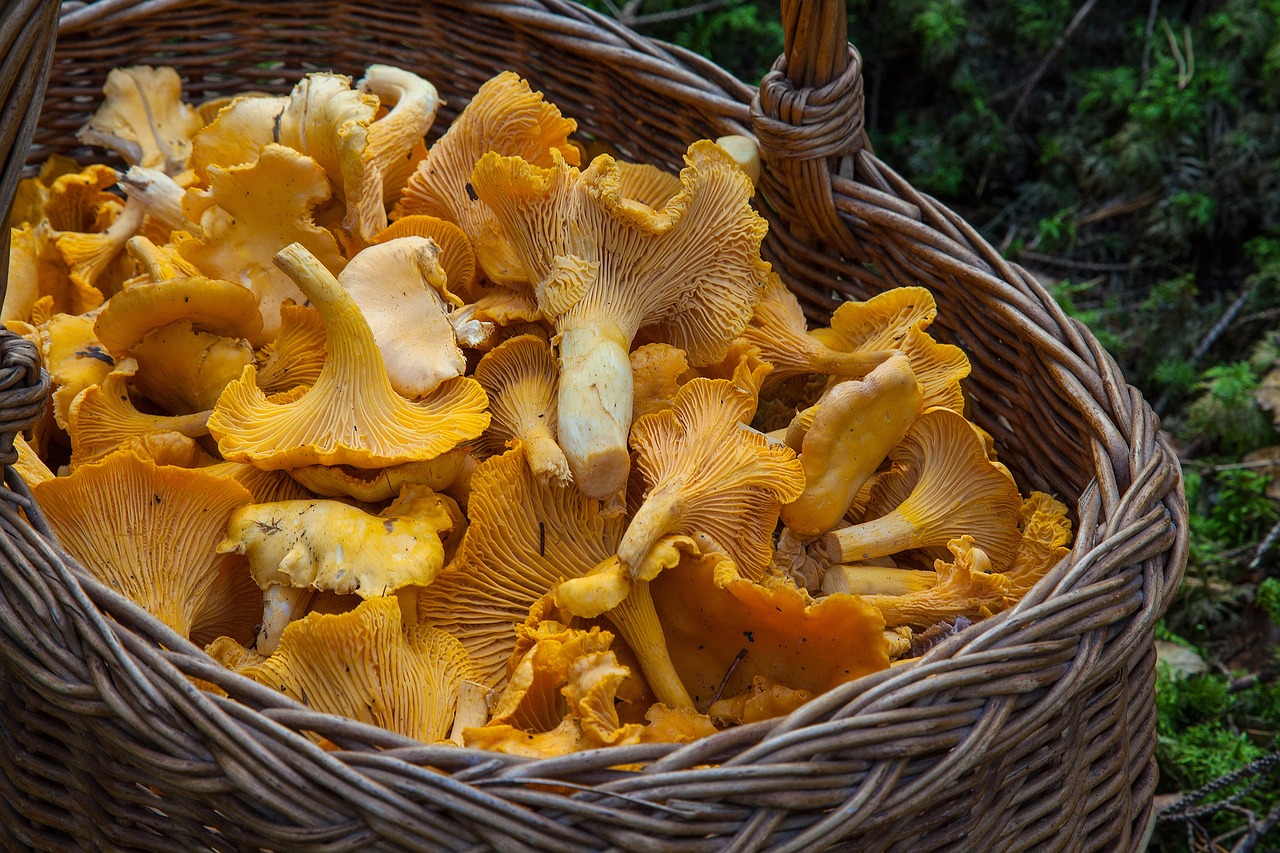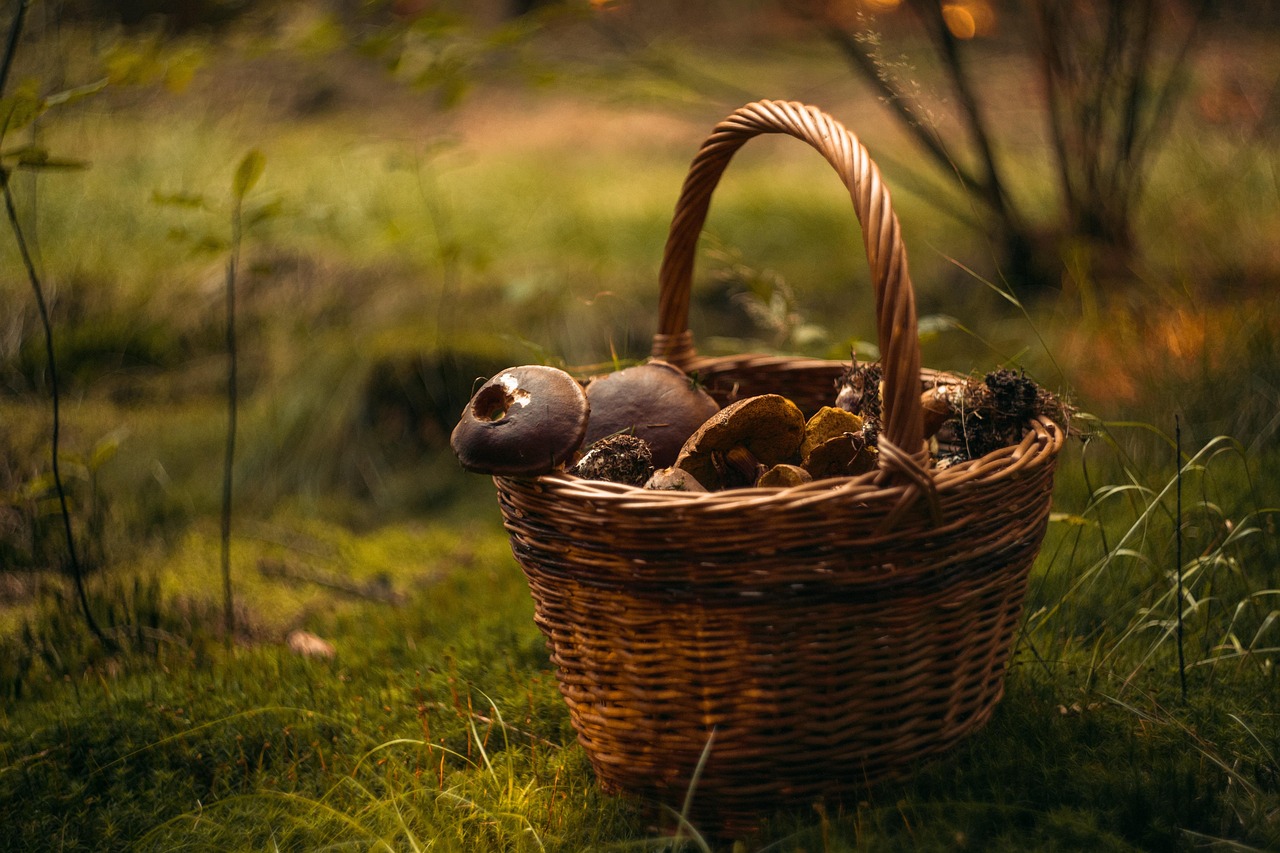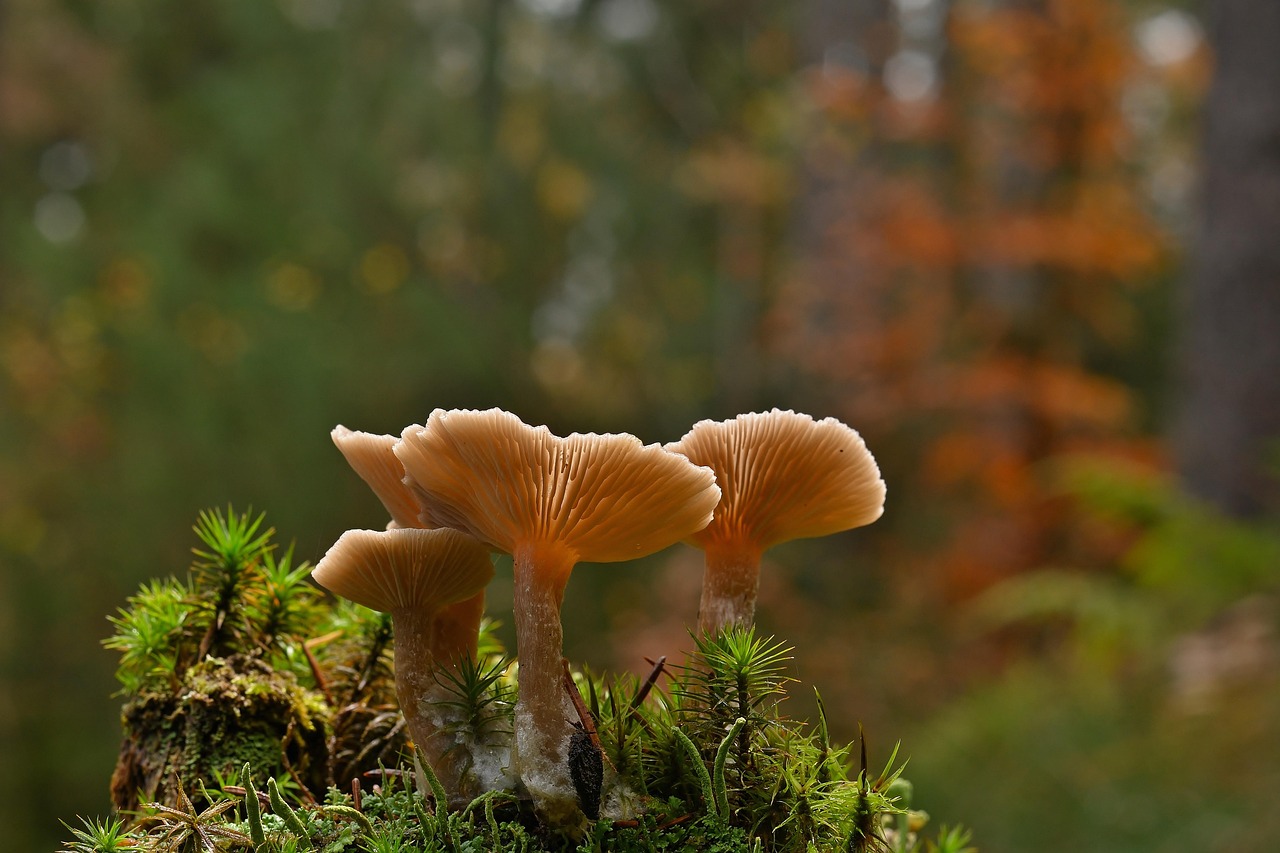Yellow mushrooms often spark curiosity and concern among both amateur and seasoned foragers. Their vibrant hue can be striking, but it also raises questions about their safety and edibility. Understanding the various types of yellow mushrooms that may appear in your garden, yard, or nearby woods is essential for anyone interested in mushroom foraging or simply enjoying nature’s bounty.
Many yellow mushrooms are harmless and even delicious, but some can be toxic or inedible. The key to safe foraging lies in accurate identification. This article aims to guide you through the process of recognizing yellow mushrooms that you may encounter, helping you differentiate between the edible varieties and those that could pose a risk.

Before diving into the specifics, it is important to understand some general characteristics of mushrooms. Fungi, including mushrooms, play a crucial role in the ecosystem. They break down organic matter and form symbiotic relationships with plants. However, not all mushrooms are created equal. Some can cause severe illness or even death if consumed.
Understanding Yellow Mushrooms
Yellow mushrooms can belong to various species, each with unique features. While some are easily identifiable, others may require a keen eye and experience to distinguish them from look-alikes. Here are some common types of yellow mushrooms you might encounter:
- Golden Chanterelle (Cantharellus cibarius): This sought-after mushroom is known for its trumpet shape and fruity aroma.
- Chicken of the Woods (Laetiporus sulphureus): Often found growing on trees, this mushroom has a yellow-orange color and a texture similar to chicken.
- Common Yellow Waxcap (Hygrocybe flavescens): This small mushroom often grows in grassy areas and is characterized by its bright yellow cap.
- Yellow Morel (Morchella esculenta): A prized edible mushroom, it has a distinctive honeycomb appearance.
It is crucial to note that while some yellow mushrooms are safe to eat, others can cause adverse reactions. The table below summarizes key features of these common yellow mushrooms to help with identification.
| Mushroom Name | Edibility | Key Characteristics |
|---|---|---|
| Golden Chanterelle | Edible | Trumpet shape, fruity smell, yellow to orange color. |
| Chicken of the Woods | Edible | Bright orange-yellow, shelf-like growth on trees. |
| Common Yellow Waxcap | Inedible | Small size, bright yellow cap, grows in grass. |
| Yellow Morel | Edible | Honeycomb appearance, hollow stem, conical cap. |
When identifying yellow mushrooms, consider factors such as habitat, season, and physical characteristics. Observing where the mushroom grows is essential. Fungi thrive in specific environments, which can provide clues about their identity. For instance, Golden Chanterelles often grow in moist forested areas, while Chicken of the Woods is typically found on decaying wood.
In addition to examining habitat, pay close attention to the physical features of the mushroom. Characteristics such as the shape of the cap, the presence of gills or pores, and stem texture are critical for accurate identification. Remember that yellow mushrooms can vary in shade from pale yellow to deep gold, so color alone is not a definitive indicator.
If you are new to mushroom foraging, consider seeking guidance from experienced foragers or joining a local mycological society. These resources can provide valuable hands-on experience and knowledge about identifying edible versus toxic varieties.
Common Yellow Mushroom Species
Understanding the various yellow mushroom species is vital for foragers. Different species can have distinct characteristics, habitats, and edibility. Below are some common yellow mushrooms, along with their descriptions and key features.
1. Golden Chanterelle
The Golden Chanterelle is one of the most sought-after edible mushrooms. Its delicate flavor and meaty texture make it a favorite among chefs.
- Appearance: The cap is trumpet-shaped, usually ranging from bright yellow to golden orange. The edges are wavy and irregular.
- Habitat: Commonly found in coniferous and deciduous forests, often near oaks, pines, or spruces.
- Season: Typically appears from late spring to early fall.
2. Chicken of the Woods
This unique mushroom gets its name from its chicken-like texture and flavor. It is often used as a meat substitute in various dishes.
- Appearance: Bright yellow to orange with a shelf-like structure. It grows in large, overlapping clusters.
- Habitat: Primarily found on decaying wood, especially oak trees.
- Season: Generally found during the summer to early fall.
3. Common Yellow Waxcap
The Common Yellow Waxcap is known for its vibrant color but is not typically considered edible. It serves as a good example of how to identify non-edible mushrooms.
- Appearance: A small mushroom with a bright yellow cap that can become sticky when wet.
- Habitat: Frequently found in grassy areas or meadows, particularly after rainfall.
- Season: Usually appears in late summer to autumn.
4. Yellow Morel
The Yellow Morel is a highly prized mushroom among foragers due to its unique flavor and culinary versatility.
- Appearance: Features a conical cap that resembles a honeycomb. The stem is hollow, and the entire mushroom is edible.
- Habitat: Often found in wooded areas, especially near trees such as ash, elm, or apple.
- Season: Typically appears in early spring.
Identifying Edible vs. Toxic Yellow Mushrooms

It is crucial to differentiate between edible and toxic yellow mushrooms to ensure safety while foraging. Here are some tips to help you make accurate identifications.
Physical Characteristics
Look closely at the physical features of the mushrooms you encounter. Pay attention to:
- Cap Shape: The shape can vary from flat to conical or wavy. This distinction helps narrow down the species.
- Gills vs. Pores: Observe whether the mushroom has gills (thin, blade-like structures) or pores (small holes). For example, Chanterelles have false gills that are more like ridges.
- Color Variations: Note variations in color, as many mushrooms can change hue based on moisture levels or maturity.
Habitat Considerations
The environment where mushrooms grow provides clues about their identity. Take into account:

- Soil Type: Some mushrooms thrive in specific soil types, such as sandy or clay-rich soils.
- Proximity to Trees: Many mushrooms form symbiotic relationships with trees, so knowing which trees are nearby can aid identification.
- Mushroom Growth Patterns: Observe whether mushrooms grow solitary or in clusters, as this can help differentiate species.
Be aware that some toxic mushrooms may closely resemble edible varieties. Always cross-reference your findings with reputable sources or guides to ensure safe identification before consumption.
Common Yellow Mushrooms to Avoid

While many yellow mushrooms are edible and delicious, others can be toxic or cause adverse effects. It is crucial to recognize these harmful varieties to ensure safe foraging. Below are some common yellow mushrooms that should be avoided.
1. Yellow Fly Agaric (Amanita muscaria)
The Yellow Fly Agaric is a well-known toxic mushroom. It is easily recognizable due to its iconic appearance.
- Appearance: This mushroom features a bright yellow cap adorned with white warts and a bulbous base.
- Habitat: Typically found in coniferous forests, often near birch and pine trees.
- Effects: Consuming this mushroom can lead to nausea, hallucinations, and in severe cases, can be fatal.
2. Common Yellow Toadstool (Amanita citrina)
The Common Yellow Toadstool is another potentially dangerous mushroom that resembles some edible species.
- Appearance: It has a pale yellow to light brown cap with a smooth surface and a bulbous base.
- Habitat: Often found in woodland areas, particularly in moist soil.
- Effects: This mushroom contains toxins that can cause gastrointestinal distress and liver damage.
3. Yellow-staining Mushroom (Russula claroflava)
The Yellow-staining Mushroom is not lethal but can cause gastrointestinal issues if consumed.
- Appearance: This mushroom has a bright yellow cap that stains a darker color when handled.
- Habitat: Commonly grows in forests, often in acidic soils.
- Effects: Consumption may result in nausea and stomach cramps.
Tips for Safe Mushroom Foraging
If you are new to mushroom foraging, safety should be your top priority. Here are some essential tips to ensure a safe experience while identifying and collecting mushrooms.
1. Educate Yourself
Before heading out to forage, invest time in learning about the mushrooms in your area. Consider the following:
- Field Guides: Purchase or borrow reliable field guides that focus on mushrooms native to your region.
- Online Resources: Use reputable websites and forums dedicated to mycology for information and identification help.
- Mushroom Workshops: Attend workshops or classes led by experienced foragers or mycologists.
2. Go with an Experienced Forager
If possible, go foraging with someone who has experience identifying mushrooms. They can provide valuable insights and guidance, helping you learn the ropes more effectively.
3. Use the “Three Identifiers” Rule
A good practice in mushroom identification is to follow the “Three Identifiers” rule. This means you should confirm three key characteristics before deciding if a mushroom is safe to eat:
- Color: Note the cap color, gill color, and stem color.
- Shape: Observe the shape of the cap, stem, and any unique features like warts or rings.
- Habitat: Keep track of where you found the mushroom, as specific species grow in particular environments.
4. Avoid Eating Unknown Mushrooms
If you are uncertain about a mushroom’s identity, do not consume it. Many mushrooms can look alike, and it is better to err on the side of caution. Always seek expert advice if you are in doubt.
Mushroom foraging can be an exciting and rewarding activity. By educating yourself about both edible and toxic species, you can enjoy the natural world while minimizing risks associated with wild fungi.
Tips for Sustainable Foraging
While foraging can be a delightful activity, it is important to practice sustainability to ensure that mushroom populations remain healthy for future generations. Here are some essential tips for sustainable mushroom foraging:
- Harvest Mindfully: Only take what you need. Leave enough mushrooms behind to allow for spore dispersal and regrowth.
- Use Proper Techniques: When harvesting mushrooms, use a knife to cut them at the base rather than pulling them from the ground. This method minimizes damage to the surrounding mycelium.
- Avoid Overharvesting: If you find a particularly abundant area, consider rotating your foraging locations to prevent depleting any one spot.
- Respect Private Property: Always seek permission before foraging on private land, and adhere to local regulations regarding foraging in public areas.
Resources for Further Learning
As you continue your journey into the world of mushrooms, consider utilizing various resources that can enhance your knowledge and skills. Here are some recommendations:
- Mushroom Field Guides: Invest in a comprehensive field guide specific to your region. Look for guides with clear photographs and detailed descriptions.
- Online Courses: Various platforms offer courses on mushroom identification and foraging techniques. These can be helpful for both beginners and experienced foragers.
- Mushroom Identification Apps: Several mobile applications can assist with identification by allowing you to upload photos and receive feedback from experts.
- Local Mycological Societies: Joining a local club can connect you with other enthusiasts and provide opportunities for hands-on learning and group forays.
Final Thoughts
The world of yellow mushrooms is both intriguing and complex. With their vibrant colors and varied species, these fungi can be enticing to discover. However, safety and knowledge are paramount when considering foraging. By familiarizing yourself with both edible and toxic varieties, you can confidently explore your surroundings while minimizing risks associated with mushroom consumption.
Remember to employ careful identification techniques, respect nature, and continuously educate yourself through available resources. Mushroom foraging not only connects you with nature but also enhances your appreciation for biodiversity. As with any outdoor activity, a responsible approach ensures that future generations can enjoy the beauty of mushrooms just as we do today.
So, equip yourself with knowledge, respect the environment, and embark on your mushroom foraging adventures with enthusiasm and care!
